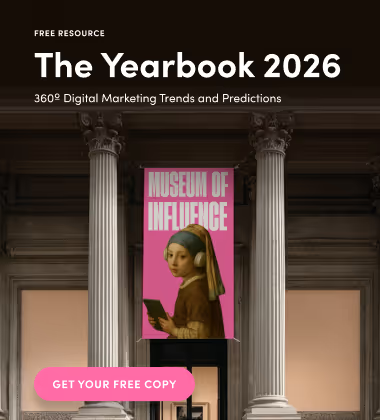With over 2.7 billion monthly active users, Facebook has been one of the best platforms for brands to use to connect with consumers, especially through Pages and Ads. However, brands and small businesses have started to recognize the potential for Facebook Groups as a tool for social media marketing —they’re no longer what you just used in high school to tell your friends you have a new phone number. In fact, according to Hootsuite, 1.8 billion people use Facebook Groups, and once the pandemic set in, local group membership grew 3.3x from February - May 2020!
But why are Facebook Groups such a popular social media tool for building communities? Acting as a platform to converse with your consumers, a Facebook Group allows your brand to directly engage with new and loyal customers with exclusive content, provide customer service, and ultimately, create a connection.
While starting a Facebook Group for your large brand or small business can be daunting, we outline below the basics of what a Facebook Group is, and some tips on developing an engaging marketing strategy.
What are Facebook Groups? What’s the Difference vs. a Facebook Page?
A good way to think about Facebook Groups vs. Pages is with a community vs. company focus. Your Facebook Page is basically your brand’s “Profile,” as here, you post updates, have your contact information, and may even post promotional and creative content. Really, on a Facebook Page, you are “speaking to” the customer. While you can do the same in a Facebook Group, it now opens the floor for consumers to post content - not just you! In Facebook Groups, not only can you speak to a customer, customers can speak to you, and customers can speak to each other.
Additionally, there are 3 types of privacy options when creating a Facebook Group:
- Public - anyone can join, invite new members, and post, and non-members can see posts on the group wall. This may be a good option if you’d like to speak to any potential consumer.
- Closed - Admins accept new members, actions are limited depending on the group rules, and non-members can’t see the contents of the group wall. This may be a good option if you want to speak to more engaged consumers, or if they have to verify that they’ve purchased your product.
- Secret - This group can’t be searched for, and only the admin can add new members. This may be a good option if you want an exclusive, invite-only Facebook Group.
- Facebook Groups can be affiliated with your Facebook Page. Depending on it’s privacy level, we recommend this so consumers can easily find your brands’ group!
If you’re now convinced that Facebook Groups are a great marketing tool to build connections with your consumers, here are a couple of tips on getting started!
1. Set Clear Rules and Boundaries
Having good group rules set the tone for how members interact with you and each other. By outlining expectations on group culture from the beginning, it can help prevent conflict or inappropriate content for your brand. That being said, group rules don’t have to be incredibly rigid and can be encouraging too! Outside of group rules, if your group is closed, you can also set membership questions for when a user requests to join. Here, you can make sure this member fits into the demographic of who, and what your group speaks to.
Here’s a great example of how Canva uses group rules to can set the tone and help members contribute in a safe environment:

2. Have a Community Manager and Engage Regularly
There are many perks to having an engaged admin, or community manager. Not only can the admin monitor activity to ensure everyone is following the rules, they can also address a negative customer experience, troubleshoot problems, and be brand ambassadors. Especially when Facebook Groups are used as a marketing tool, it is important to keep engaged with your audience and post, respond, and create conversation. Even if your members engage in the group frequently without your brand initiating conversation, responding and uplifting your consumers will create an even better experience. Instant Pot does a great job of creating community engagement, where users can ask questions, post recipes, and even get access to trouble-shooting support!

3. Promote the Group
Like most online communities - if you want people to join, you have to spread the word! Depending on how exclusive you want your group to be (i.e. brand loyalists vs. any consumer), you could promote your group in many different ways. One of the main ways to promote it would be on all of your other social platforms - i.e. your Facebook Page, Instagram, Twitter, or TikTok! If it’s more exclusive, you could promote it through an e-mail newsletter to selected members. Or, if it’s a local group for your brand, you can promote it at certain stores in the community. Either way, spreading the word is key when building your group membership.

4. Share Exclusive Content
A great way to grow your community, or engage with them, is by sharing exclusive content. Perhaps it’s a sale that’s exclusive to members, or open to members before anyone else! It could even be early product launches or posting resources like recipes and workouts. Peloton, which has grown increasingly popular, often shares exclusive content to their community. By having a private group that requires members to validate if they own a Peloton product, the brand adds value with their exclusive experience.

Conclusion
Facebook Groups are a great platform for reaching your consumer and creating an engaged community. While there are many, many ways to use Facebook Groups, the most important thing to remember is to be authentic to your brand, and give your consumers something to talk about. If we’ve managed to convince you to develop a Facebook Group marketing strategy - let us know!



